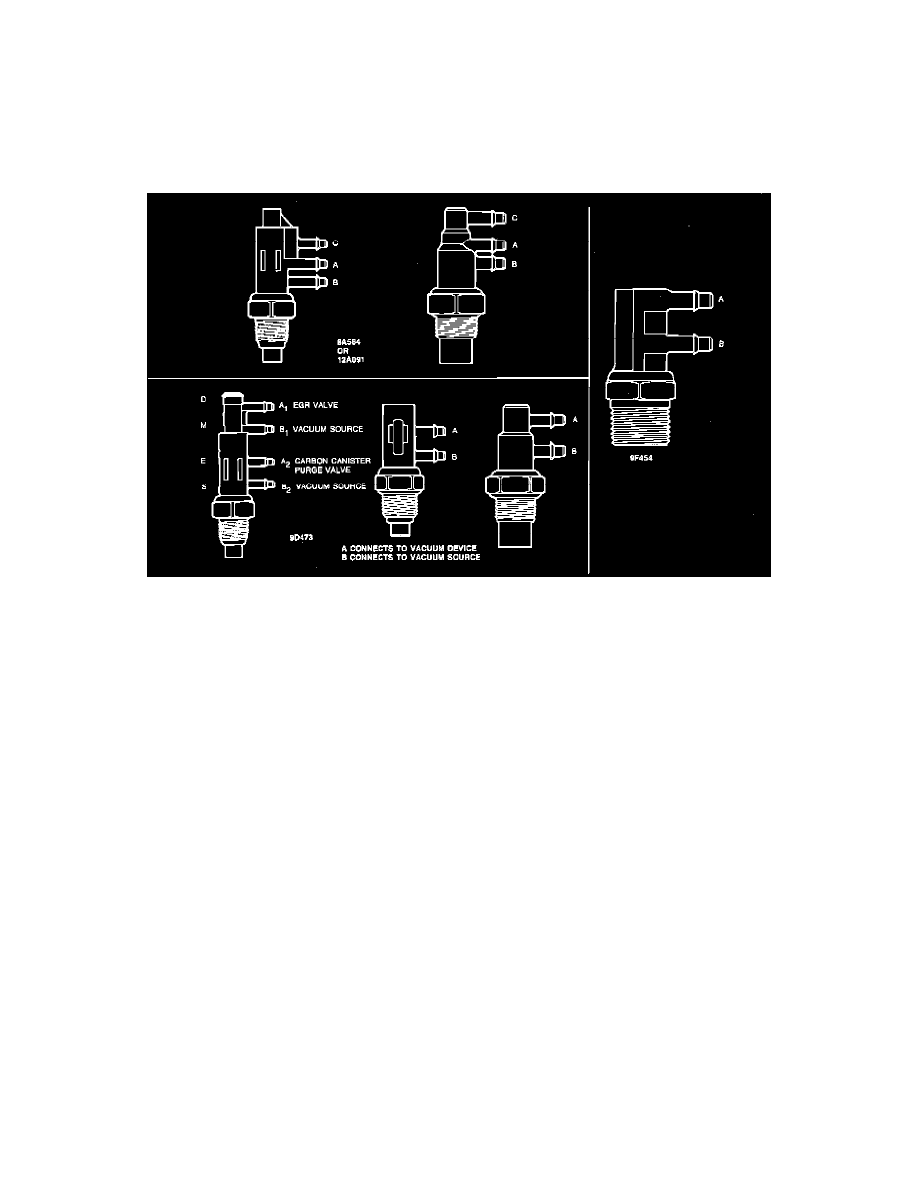Ranger 4WD V6-183 3.0L (1993)

Thermostatic Air Cleaner Vacuum Switch: Description and Operation
DESCRIPTION
Vacuum control valves are designed to operate according to engine coolant temperature and are usually threaded into the engine block or
manifold.
PURPOSE
Based on the wax pellet sensing bulb principle and theory, the vacuum control valve directs and supplies vacuum to other emission control
components. The bimetal principle is used with the 2-port (9F454) VCV.
2-, 3-, and 4-Port Vacuum Valves
OPERATION
The 2-port VCV - opens to supply vacuum at a pre-determined engine coolant temperature calibration.
The 4-Port VCV - operates the same as the 2-port. Vacuum is supplied to two different components that are calibrated for the same temperature.
The 3-Port VCV - directs vacuum from the center port to the upper port during cold engine operation. After the engine reaches operating
temperature, the upper port closes and the lower is opened.
For example: during cold engine warm-up, vacuum from the center port passes through the upper port to be applied to the heat control valve. After
engine warm-up, the upper port closes, the lower port opens, and vacuum passes through to be applied to the purge control device. Vacuum is
controlled by a normally closed vacuum solenoid.
